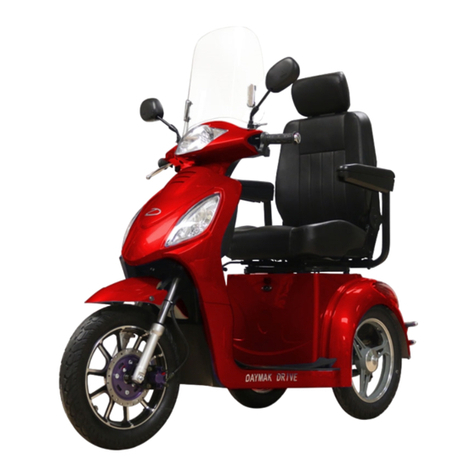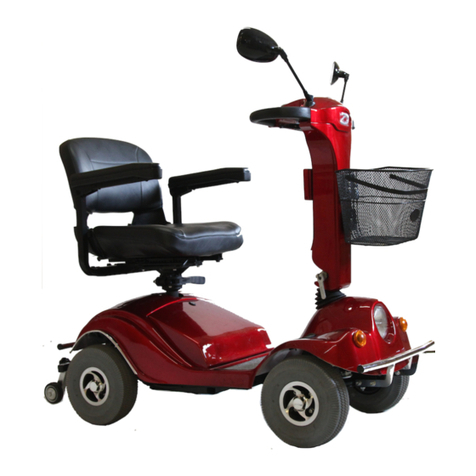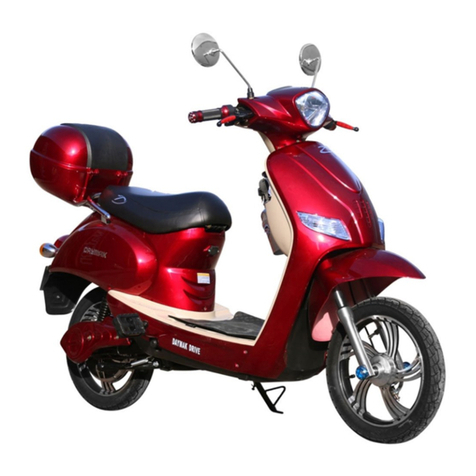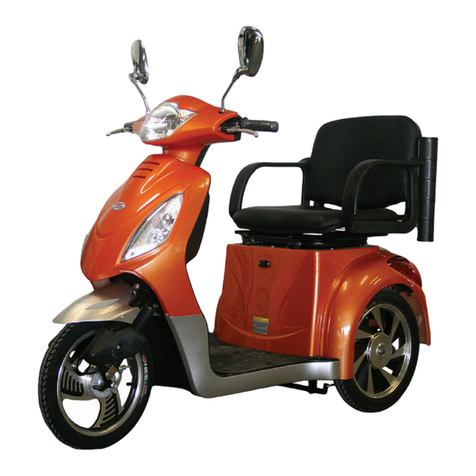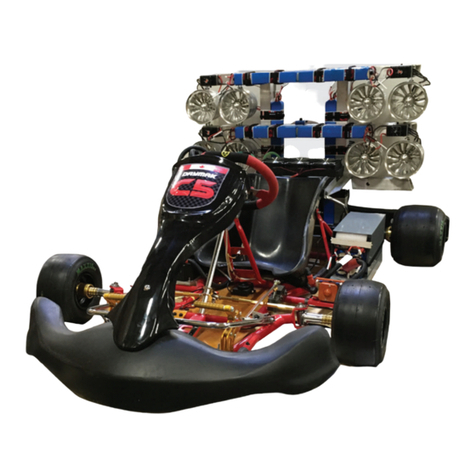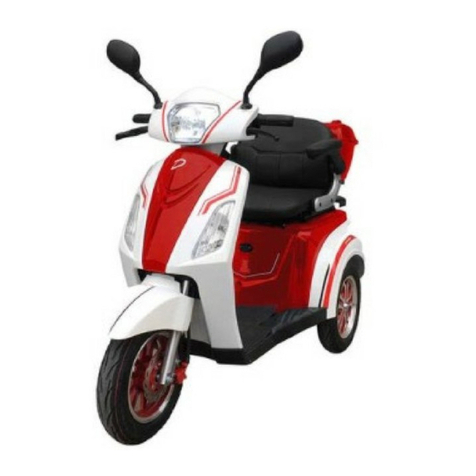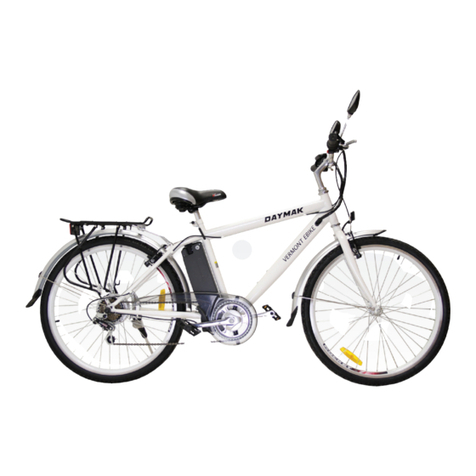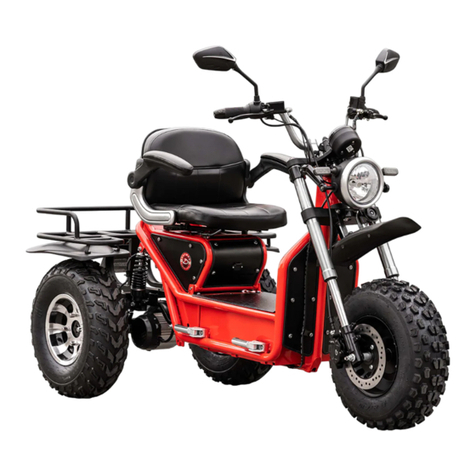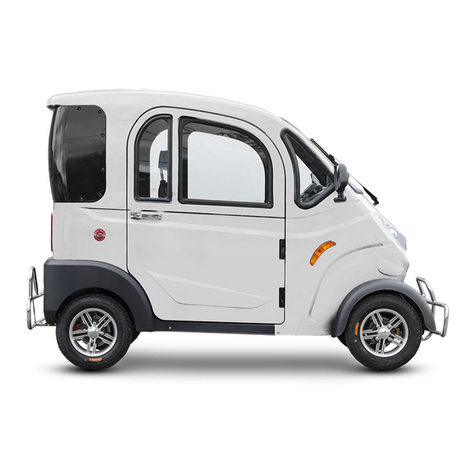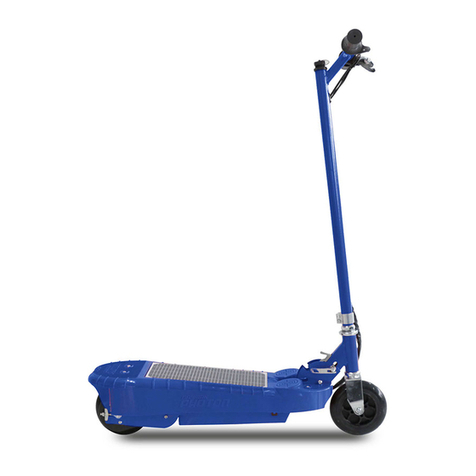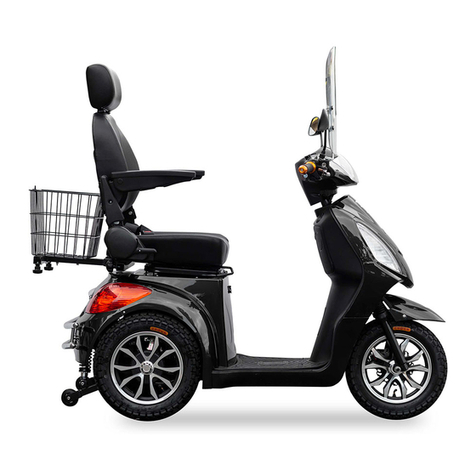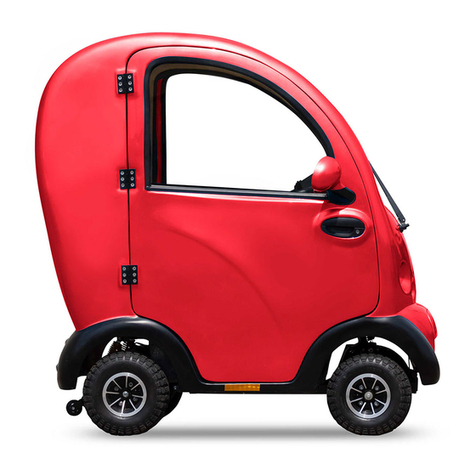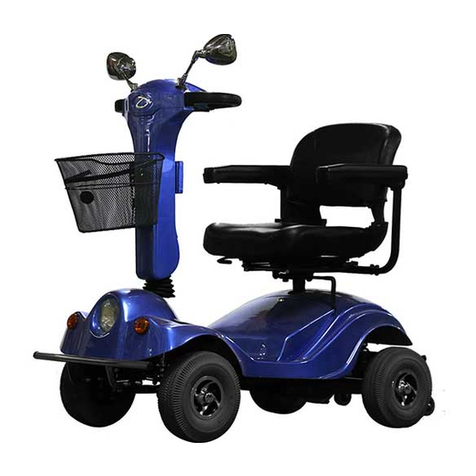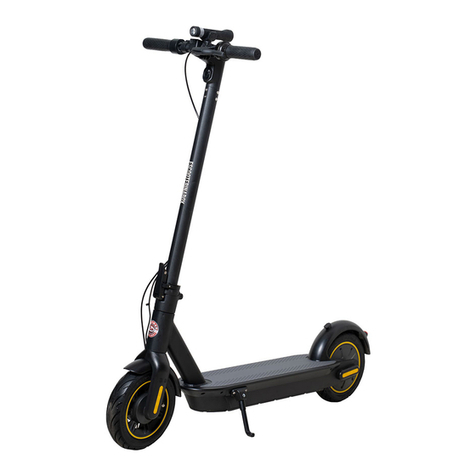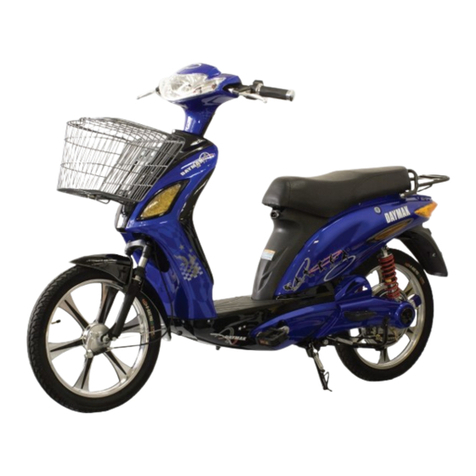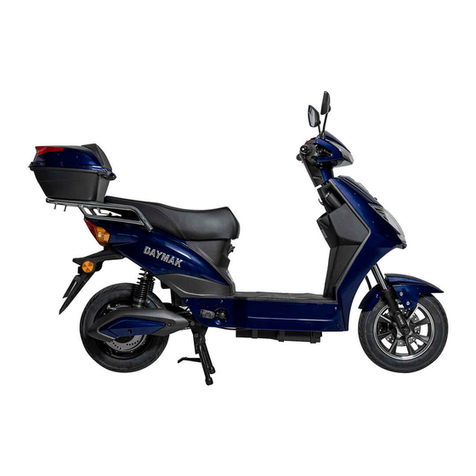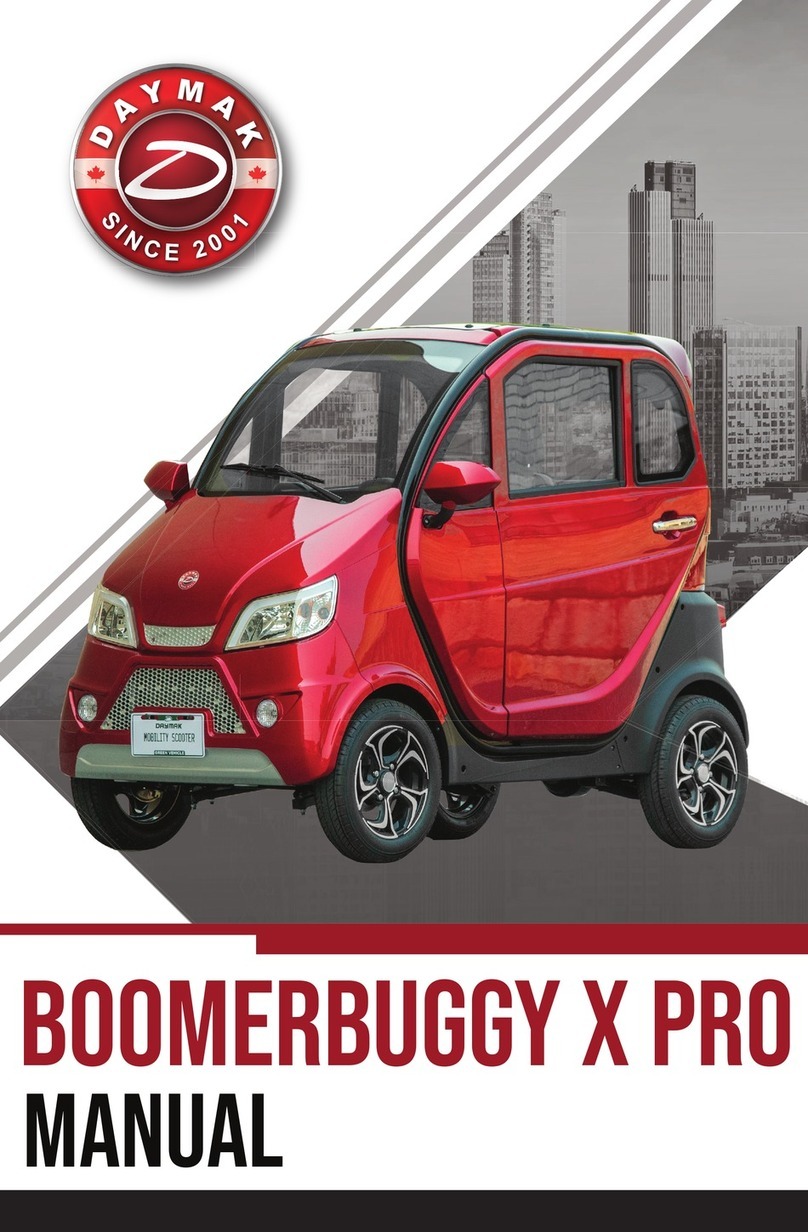
10
Signalling
The Horn
The mobility scooter has a horn. Use this when coming close to pedestrians to warn of
your passing. See the operaon secon for where to nd your horn and how to use it.
Lights
The headlight and tail light are useful features when you are riding at night or in dark
areas. They radically improve your safety on the sidewalk or road. The lights on your
mobility scooter consume some electricity. Keeping them on may reduce the maximum
distance you can travel on one charge by about 5 %.
Riding in Wet Weather
Your mobility scooter is designed to funcon in wet condions, such as when it is raining.
However, it is easy to slip when moving at high speeds. If it is very wet, be sure to avoid high
speeds. When you are traveling in wet weather, water may cause your brakes to funcon
less eecvely because it reduces fricon between the brake pads and the wheels. Take
care to slow down and give yourself more room to stop or slow if necessary.
The Motor and Water
Your mobility scooter is not designed to be immersed in water. Always ensure that the
water level does not go above the motor, to prevent water from geng inside of it. Water
in the motor can cause short-circuits and may damage the electrical systems in your
Mobility Scooter.
Riding in Cold Weather
Your mobility scooter is designed to operate year-round. However, in very cold condions
or when there is a lot of snow or slush on the ground, it is possible for the motor in the
mobility scooter to get wet or for the brakes to funcon less eecvely, just as it can
happen in wet weather. Below 10 degrees Celsius, the baery will not work as well as it
would in warmer temperatures. While Lithium-Ion baeries perform beer than Lead-
Acid baeries in temperature extremes, both will experience reduced performance in
cold temperatures.
Also, riding the mobility scooter in cold temperatures may require you to replace the
baery sooner rather than later.

